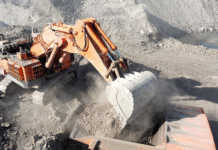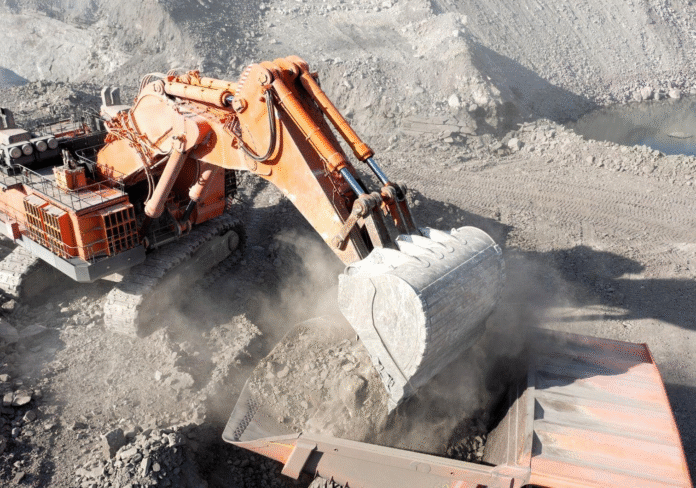Surface mining equipment plays a central role in extracting valuable minerals and resources from the earth’s surface. From draglines to bulldozers, these powerful machines transform rugged terrains into efficient mining sites. This article explains how surface mining equipment works, why it is vital to modern extraction, and the impact it has on productivity, safety, and sustainability. Whether you’re new to mining or seeking deeper insights, here’s a clear and comprehensive guide.
Mining has been at the heart of human progress for centuries. From fueling industrial revolutions to supplying materials for modern technology, the extraction of resources drives global growth. One of the most essential methods of resource recovery today is surface mining, a process that relies heavily on advanced machinery to move, break, and transport massive amounts of earth. Understanding how surface mining equipment works offers insight into the efficiency, safety, and economic backbone of this vital industry.
What Is Surface Mining?
Surface mining is the process of removing minerals, ores, or fossil fuels that lie close to the earth’s surface. Unlike underground mining, where tunnels and shafts are dug deep into the ground, surface mining involves stripping layers of soil and rock to expose valuable deposits. This method is often chosen when resources are shallow and spread over a wide area. It is highly productive, cost-effective, and safer compared to underground alternatives.
Types of Surface Mining
Surface mining takes several forms, each depending on the type of resource and the terrain.
- Open-pit mining: Large pits are dug to extract metals like copper and iron.
- Strip mining: Long strips of earth are removed, common in coal mining.
- Mountaintop removal: Entire peaks are blasted and cleared to uncover seams beneath.
- Quarrying: Focused on extracting building materials such as limestone or granite.
Each type demands specialised equipment to perform specific tasks, from blasting to hauling.
Key Machines in Surface Mining
The industry depends on a wide range of machinery, each with its own role:
- Draglines: Gigantic machines that use large buckets to remove overburden.
- Shovels and excavators: Designed to dig, lift, and load materials.
- Bulldozers: Push earth and clear debris, preparing ground for extraction.
- Loaders and trucks: Move mined materials to processing plants or stockpiles.
- Drills and blasting tools: Used to fragment hard rock for easier removal.
Together, these machines form a network of efficiency, ensuring that resources are uncovered, extracted, and transported smoothly.
How Surface Mining Equipment Works
At the heart of the process lies engineering precision. For example, draglines operate with massive booms and wire ropes to scoop thousands of cubic meters in a single motion. Bulldozers level the ground, while drills bore into rock layers for explosives. After blasting, excavators and loaders handle the fragmented material. Trucks with enormous payloads carry the resources to crushers or plants for further refinement.
In the centre of this complex process, surface mining equipment ensures coordination and productivity. Without it, modern mining would be unthinkable, as manual labor alone cannot handle the enormous scale of operations.
Safety and Efficiency
Mining has always carried risks, but equipment advancements have significantly improved safety. Remote-controlled machines, automated hauling systems, and GPS guidance reduce human exposure to hazards. Efficiency is another key factor. Modern equipment operates with minimal downtime, advanced diagnostics, and predictive maintenance systems that keep production running smoothly.
Role in Resource Extraction
Surface mining equipment is not just about digging and hauling. Its role goes deeper:
- Maximising recovery: Machines are designed to extract the maximum amount of ore with minimal waste.
- Sustainability: Newer models reduce fuel consumption and emissions, aligning mining with environmental regulations.
- Economic impact: Efficient machinery lowers costs, making resources more affordable globally.
By combining power with precision, these machines ensure that industries from energy to construction get the raw materials they depend on.
Challenges and Innovations
Despite its advantages, surface mining faces challenges. Environmental impact, community opposition, and equipment costs are significant concerns. However, innovation is reshaping the field. Electric trucks, AI-driven operations, and automated drilling systems are leading the shift toward greener, smarter, and safer mining. These changes not only improve extraction but also build public trust by showing a commitment to sustainability.
Future of Surface Mining Equipment
The future points toward greater automation and digitalisation. Mines of tomorrow will rely on self-driving trucks, drones for site surveys, and AI systems that predict maintenance needs before breakdowns occur. Renewable energy integration will further reduce the carbon footprint of heavy machinery. In essence, the evolution of surface mining equipment is steering the industry toward a future where productivity and responsibility go hand in hand.
Wrapping Up
Surface mining remains a cornerstone of global resource extraction, and its success hinges on the equipment powering it. From massive draglines to agile bulldozers, every machine plays a part in uncovering the earth’s treasures. As technology advances, these machines are becoming safer, cleaner, and more efficient. For industries, governments, and communities alike, the future of mining will continue to be defined by the power and potential of surface mining equipment.





















